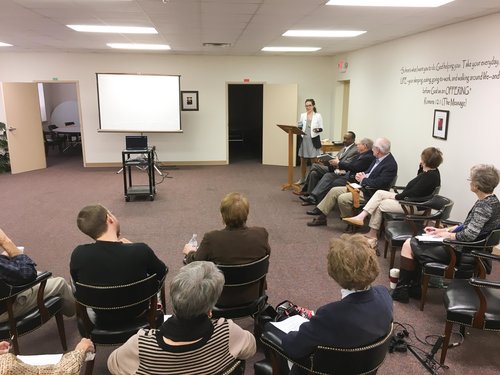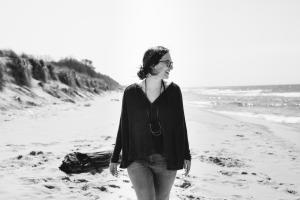“Healing is impossible in loneliness; it is the opposite of loneliness. Conviviality is healing. To be healed we must come with all the other creatures to the feast of Creation.” –Wendell Berry

Every Sunday for four weeks in January, I spent an hour in a sunday school class on the third floor of my church building with a beautiful group of people who call themselves pilgrims, unfinished.
They invited me to share my journey with them, particularly the more recent journey of learning about and living into my own native culture and spirituality and how they fit into the church as I see and experience it today.
I began by telling them my story– born in Oklahoma, a member of the Potawatomi Citizen Band tribe.
I told them about my father, who worked for the Bureau of Indian Affairs and the sever with native culture I experienced at age nine when my parents divorced and I spent my youth in a small, predominantly white, conservative Christian town. I explained that I’m coming back around to myself again, learning things I never knew were inside of me, experiencing the grace of God in ways I didn’t think possible.
We studied the medicine wheel together, a tool used to understand different seasons and spaces in the life journey.
We discussed Standing Rock and listened to John Trudell’s poem Crazy Horse. When asked about things I couldn’t answer, I had the humbling freedom to say, “I’m not sure, but I’m still learning.”
They were gentle and steady listeners, and we found by week four we’d become comfortable with each other in that story-telling space, a gift recognized in many cultures who pass it along from generation to generation.
We asked again and again, in different ways, how the church could possibly bridge the gap that has been broken with native peoples for so long.
Some spaces within Christianity have done it, but there is still too much misunderstanding and disconnect, and the deeper I lean into who I am as an indigenous woman and worship leader, the more I need to find spaces where conversations are shaped around this difficult but necessary topic.
Through these four weeks, I’ve learned that it’s possible.
I’ve learned that it’s possible when I spend time listening to the voices of Brian McLaren, Barbara Brown Taylor, Winona LaDuke, Richard Rohr, Randy Woodley, Kent Nerburn and so many others.
Brian McLaren and a few of his colleagues have publicly jumped into the conversation, where it is uncomfortable and painful, but where healing begins.
I found a piece of that healing one afternoon, sitting in a monastery front office with a monk who told me that as painful as my journey will be, I must keep going, because it’s important.
Every one of those moments within the last year have felt like earth-shifting moments, like the people of the world are not only gathering around native peoples at Standing Rock, but they are gathering around me, too, and my brothers and sisters.
They are gathering around creation with a renewed heart and energy to do good to this world that we inhabit.
And in these gathering spaces, it’s not just what they’ve learned listening to me. I’ve answered my own questions in that space. I’ve learned that it is dangerous to tell anyone that experiencing God can only happen within a particular cultural lens. But when we see glimpses of God through different eyes, we realize that the umbrella of God’s love, under which we reside, is a wide and bountiful net that reaches every culture and connects every spirit.

In this progressive Cooperative Baptist Church where I lead worship, I’ve found support for my journey, encouragement in the difficult task of de-colonizing myself, and I’m so grateful.
But what about the rest of the church? What about the conservative spaces in which I grew up that never speak of native culture, or churches that hold racism as a divine gift?
Can I say for sure that the church is ready to embrace someone like me? Yes and no.
Can I say that I’m ready to engage the church in my own native skin? Yes and no.
And so, the future is held in our ability to be patient with one another, while pushing each other deeply into the reality of the Kingdom.
I dream of walking beside my white brothers and sisters as we learn together what has been forgotten and ignored, and what must be admitted for healing to begin. These are the things I see through both lenses of my life– through my native skin and my white skin, and because of both, I will ask them to kindly hold me steady in the love of Jesus– not the version of Jesus we see as a western religious man, but as he always has been in his ability to love me in my own cultural identity and everyone else in theirs, because he holds it all together under his care.
There in that space of conversation and learning, I believe we see another glimpse into the full otherness that has always been God, Spirit, Life-giver.
There, in those glimpses, we are reminded that we belong, not only to the love of Christ, but to each other, in conversations and around tables with humble and quiet spirits to listen and share, to walk beside, to be a companion, to not be afraid.
In a discussion with a few friends one Wednesday night in that same building, we discussed what “color-blindness” can do to culture in the way of ignoring race altogether, or pretending that prejudice doesn’t exist.
If the church is to get anywhere with people of color, it must learn to embrace color, to learn from it, engage it, and be honest with it.
Like the clergy who came to Standing Rock and denounced the Doctrine of Discovery, we begin conversations around the American table, even around the global table, even on the open plain or by the river.
When we begin those conversations, as I dream of doing, we will find no space to other someone else out of fear, to say that God represents only one culture, or that it’s too late for the church to find and restore what has been lost.
It may start in a Sunday school classroom. It may start with a documentary, or in a coffee shop, or at a protest or in a living room. Wherever it happens, however it begins, I pray the steps forward are brave ones.
When we begin rebuilding what has been broken for so long, I believe the healing will shift the foundations of this benevolently created world, every culture and created thing included in a slow and steady bloom.











